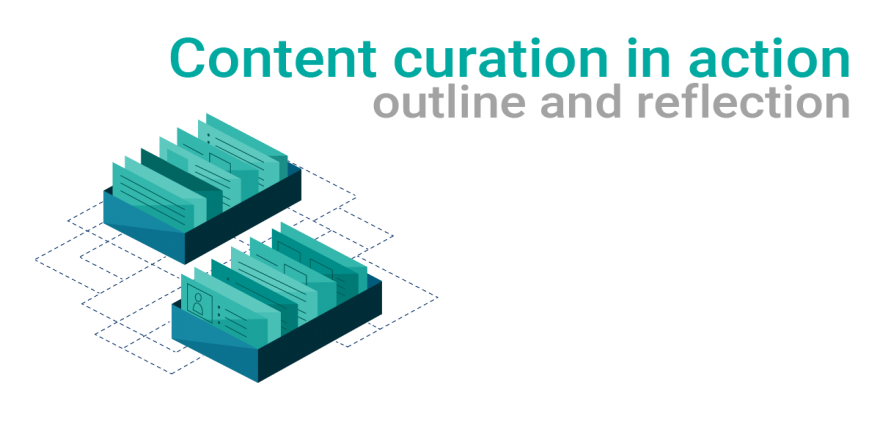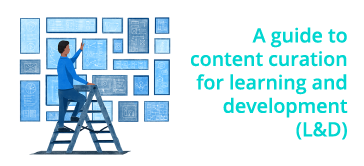Content curation in action - outline and reflection

Content curation is a hot topic in L&D at the moment. Content curation is seen as a rapid way to get around the time-consuming process of developing content. It can also be a way to help employees become more self-guided. The negative is that content curation approaches often end up just being a list of links.
Sprout Labs are in the middle of running a program called “Content Curation in Action.” It's a free, collaborative program where a group of L&D people are working together to curate a learning program called “Becoming a Leader.”
Last year we ran our first virtual conference and at the time I'm writing this we are planning this year’s virtual conference. The success of the virtual conference got me interested in exploring other formats for events. One of these was the brainstorming event we did just after Easter and we will be running more of these in the future.
We are starting to see the people regularly attending Sprout Labs events as a community. Which then leads us to question how can we foster and build that community? The “Content Curation in Action” program is an experiment in community building and collaboration.
You might be wondering why you haven't heard about the program before. Only the people who signed up to our content curation webinar got invitations. Our webinars are often only an introduction to a topic and our "in action program" is a chance to explore topics further. We want everyone who was part of the program to have been a part of the content curation webinar. Also for the collaborative process to work, the numbers of people involved need to be small.
Why focus on leadership?
The program is focused on leadership because it's a topic all organisations need to deal with. It's also an area where the learning experiences are often not effective. Developing leaders in an organisation is complex. The challenge with this topic is that there is a lot of material on the internet about it.
What will the end result be?
The end result will be a free and open toolkit where each topic will have curated resources and there will be different learning approaches around the topic, e.g. a self-paced pathway, a social pathway and one focused on the workplace. This will provide a series of ideas that can be mixed and matched for the organisation.
Who is involved?
The fantastic group of people who are involved are:
Greg McInerney
Blake Sohier
Vanessa Barker
Nick Fernando
Tanya Rough
Murray Humphrey
Rupan Das
As well as facilitating, I'm taking part. This means I will understand the challenges the group is facing allowing me to role model the process, it will also help clarify tasks when I haven't been 100% clear about them.
How does the program work?
The program has two main parts running over four weeks. Aa weekly virtual classroom session and Google Docs for collaboration. Most of the virtual classroom discussions are focused on decision making and there are some "content" sections where I help set up the tasks for each week. Some of the best content so far has come from the group e.g. the introduction of the PROMPT framework for evaluation resources from Nick.
The Google Doc we are working is not just a blank document. There are questions and prompts. The Google Doc is where most of the work and collaboration is happening.
My concern with content curation is it often just focuses on giving people resources with annotations explaining why the resource is important. Learning is a process of behaviour change not just a piece of information. We are selecting and annotating resources and we are building different activities based on the resources. These include:
- workplace experiments
- discussions and social experiences and
- self-paced learning experiences
I set up a LinkedIn group for the program but that hasn't got any traction. Virtual classrooms and Google Docs is an easier and faster way to collaborate.
Progress and what we have learned so far
The importance of reflection
When I've been planning the virtual classroom sessions it's been easy to dive into "getting it done". So it's been valuable to start each session with the question “What have we learned about content curation this week”. It’s great being reminded just how powerful this question is.
Annotations
We didn’t talk about or plan it but what evolved is a standard format for the annotations. That is:
- Challenge or problem that is often faced
- How this resource/s will help the learner overcome that challenge.
Video is not always the best resource
When we went into the program I was thinking that most of the program could be built around TED talks. When we were selecting resources, we were quickly reminded how time-consuming watching video is and the group found some great resources that are not just video.
As I’m writing this we are about mid-way through the program and it’s going to take a bit longer than the four sessions to bring it all together. We are currently working on learning activities and it’s going to be interesting to see how they take shape.


